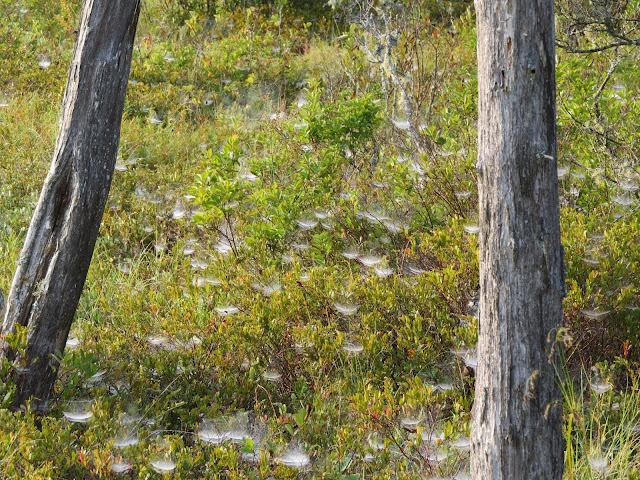Birders
talk about going to the Northeast Kingdom and getting a boreal trifecta (seeing
three species of boreal birds in one day) or a boreal Grand Slam (four boreal
species). On Thursday, with the help of NEK birding expert Tom Berriman, we had a BOREAL
BONANZA!
We
watched a Spruce Grouse preening, only a few yards from us, apparently
oblivious to our presence.
We
enjoyed Black-backed Woodpeckers - plural.
We had brought with us peanuts and sunflower seeds, and Gray Jays rewarded us by flocking around us and eating from our hands.
We saw
White-winged Crossbills, first quick flyovers at Moose Bog and then in the road
and on a tree at Victory Basin.
We saw a sad sight along River Road in Victory: a male and female crossbill dead in the road, obviously having been hit by a car.
Tom said the birds often come down to dirt roads and pick up small pieces of gravel with their tongues. Because the species evolved in tundra areas further north, with few roads, few people and very few vehicles, they don’t seem to notice oncoming cars as potentially dangerous.
We never
got a good look at a Boreal Chickadee, though we heard them in several
locations. We were just too entranced by the other birds that seemed so
comfortable with us, birds that went on with their daily lives and granted us
the privilege of watching.
The three of us practiced slow birding, moving carefully and quietly, stopping in one place and letting nature get used to our presence.
First, we spent five hours at Moose Bog. (Tom: Five hours. Three-quarters of a mile. Bernie: Walk less. Bird more.) Then we drove to Victory where we spent another two-plus hours.
Vermont’s only boreal habitat is found in the NEK. The area is characterized by spruce/fir forests, bogs and wetlands, sphagnum moss, moose and wildness.
The NEK's boreal habitat provides
breeding territory for several species that are more common further north, in
Canada.
We found the area full of a unique beauty: the bare snags, the hundreds of spider webs, the dark and mossy forest.
(There's a bird in the above photo - one that Bernie didn't notice when he was taking the picture! We think we're watching them. But they're watching us!)
Insect-eating pitcher plants are common at Moose Bog.
Our day
started with a spectacular sunrise along Newark Road, near where we’d stayed.
The rest of the day lived up to its promise!
One of the joys of birding is viewing bird behavior!
Magnolia Warbler in fall plumage
For your reference:
Wenlock Wildlife Management Area and Moose Bog
Birding Vermont's Moose Bog, by Bryan Pfeiffer
Vermont Birds and Words


























































